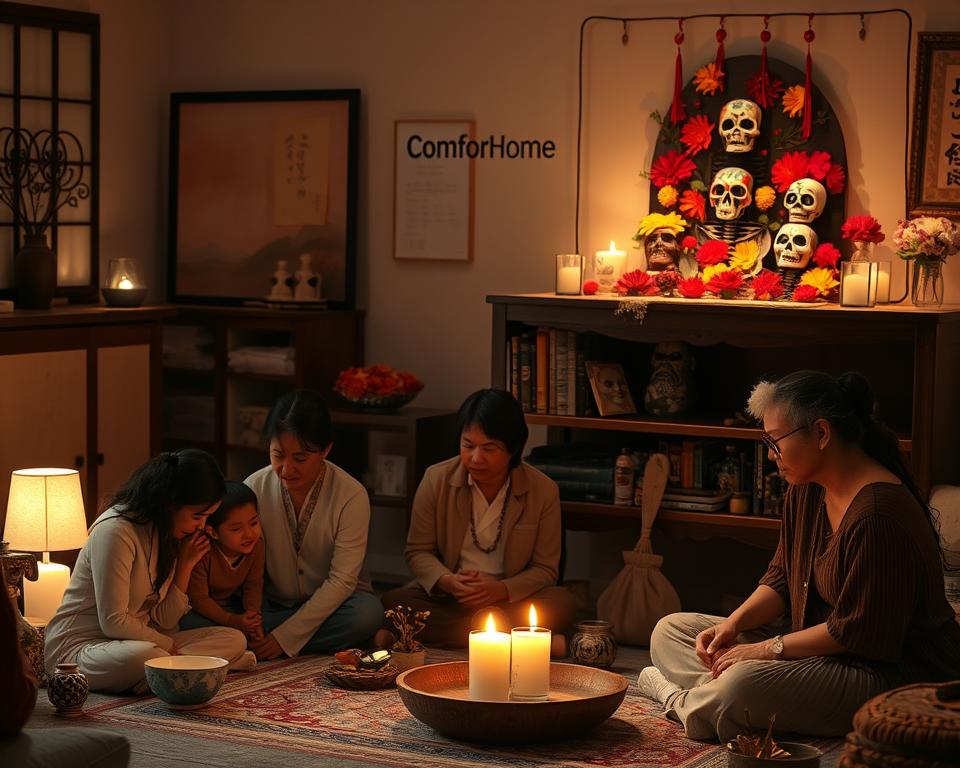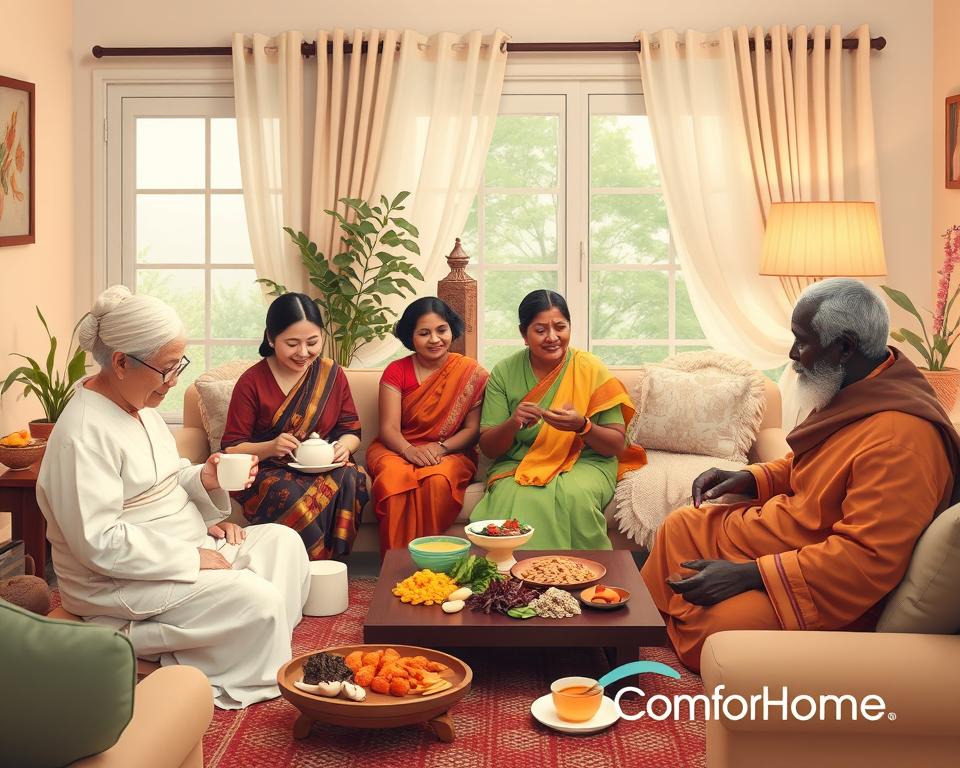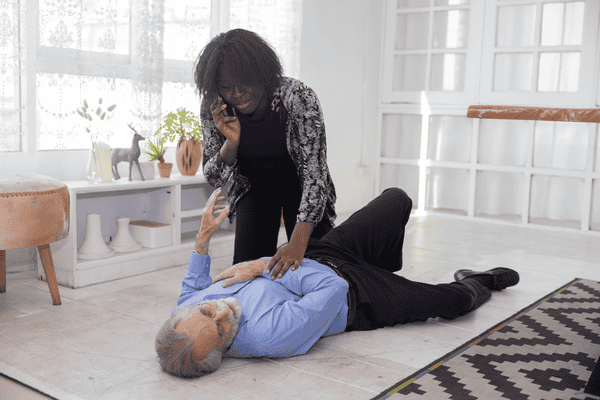At our healthcare organization, we know that cultural differences matter a lot in home care across Canada. Different families, religions, and ways of talking are common among various groups. Healthcare workers need to understand and respect these differences to give good care.
We try to learn about and honor each person’s culture while keeping our professional standards. Our goal is to close cultural gaps. We want to make sure every patient gets care that fits their values and beliefs.
Key Takeaways
- Practical examples of cultural differences that arise in home care settings
- The importance of cross-cultural communication and cultural sensitivity in healthcare
- Balancing professional standards with personalized, respectful care for diverse populations
- Understanding family dynamics and decision-making processes across cultures
- Recognizing and accommodating religious and spiritual practices in home care
Understanding Cultural Competence in Home Care Settings
In today’s diverse healthcare world, cultural competence is key for top-notch home care. It means understanding and meeting the unique cultural needs of patients from all backgrounds. It requires caregivers to be aware of their own cultural biases and to actively learn about different cultural perspectives.
At our home care agency, we focus on ongoing education for our staff. This helps them understand different health beliefs, family structures, and decision-making processes across cultures. By fostering cultural competence, we improve communication, enhance patient comfort, and reduce caregiver stress.
Racial and ethnic minorities face higher rates of chronic diseases than White individuals, and by 2050, they will make up 35% of the over 65 population in the United States. Lack of a regular doctor or health care provider is linked to lower rates of preventive services and chronic condition management, with minorities less likely to have a usual source of care compared to Whites. These disparities show how crucial culturally competent home care services are for our communities.
Patients without interpreters during health care visits may have lower satisfaction and receive lower quality care. Low literacy, more common among racial and ethnic minorities, affects their ability to understand health instructions, impacting their health care decision-making. Our agency is dedicated to providing accessible and inclusive services by addressing language barriers and tailoring our approach to each client’s unique needs.
Embracing cultural competence is not just the right thing to do; it also leads to better health outcomes, higher patient satisfaction, and more effective caregiver-client relationships. We aim to create an environment where diversity is celebrated, and our clients feel valued and respected, no matter their cultural background.
Family Dynamics and Decision-Making Across Cultures
In home care, family dynamics are key, especially in cultures where extended family makes decisions. In some Asian and Pacific Islander communities, family interests come first. We work with family members with respect, understanding their role, and making decisions together.
Gender roles in families can affect healthcare choices, and we handle this with care. A report shows families setting up foundations to include all members in their way. Our family-centered care focuses on cultural sensitivity and communication in home care.
We create a space where families can make choices that fit their cultural values. *The report talks about families where adult members from all branches attend meetings and get meeting minutes. This approach respects cultural norms and builds a strong bond between the care team and the family. It leads to better care for the individual.
Religious and Spiritual Practices in Home Care
At our home care organization, we know how big a role religion and spirituality play in health care. Our caregivers learn how to respect different religious practices. This includes dietary rules, prayer times, and using sacred items at home. We also know that some people see illness as a sign from God, which can affect their treatment choices.
We talk openly about what each person needs spiritually. We work with religious leaders when needed. This way, we give care that fits each person’s culture and beliefs.
Research shows nurses see spirituality as a big part of their job, especially for people from different faiths. But, they face challenges like not enough education, too little time, and not knowing what to do. Bad work places, not enough privacy, and not being kind enough also stop spiritual healing.
Across the world, nurses see the value of spiritual comfort. They believe in caring for the whole person, not just their body. In a study with 80 Iranian family caregivers, those who got help saw big improvements in their spiritual health. We aim to make a place where everyone’s spiritual and religious needs are respected. This way, we can give the best care possible, fitting each person’s unique needs.
Communication Styles and Language Barriers
Good communication is key in home care, but language barriers and different styles can be tough. About 272 million people, or 3% of the world’s population, live in a country not their birthplace. In the European Union, almost 37 million people, or 8% of its 447.3 million residents, were born elsewhere.
In Europe and the USA, 21% and 13% of people, respectively, are migrants or have a migration background. Children from non-Western backgrounds with kidney failure in Western Europe have poorer health quality of life. Healthcare workers struggle to give the best care due to language and resource issues.
Communication styles vary among different groups, including age and culture. Doctors think they communicate well when they show empathy, but patients want to feel informed and cared for. It’s important to focus on basic communication skills to avoid stereotypes. Strategies that put patients first help everyone understand and make decisions together.
To tackle these issues, we use professional interpreters and teach our staff about cross-cultural communication. We teach them to understand non-verbal signs, respect cultural norms, and speak clearly about health matters. We also encourage our caregivers to learn basic phrases in their patients’ languages to improve connection and understanding.
Personal Space and Physical Contact Norms
At our healthcare organization, we understand that personal space and touch norms differ across cultures. Our caregivers are trained to be very aware of these differences. They make sure to respect each patient’s personal space and touch preferences.
This is very important in situations where patients need intimate care. We teach our staff to always ask for permission before touching a patient. They also need to be careful about cultural taboos related to touch or exposure.
Understanding cultural differences in physical boundaries is a key aspect of delivering culturally competent care. Our team is trained to handle these differences well. This ensures we provide the best patient comfort while respecting their cultural norms and physical boundaries.
Practical Examples, Cultural Differences, Arise in Home Care Settings
In home care, we see many examples of cultural differences. These differences greatly affect how care is given and need a culturally aware approach. For example, some families want to be there during medical procedures, while others prefer privacy. Also, people have different views on pain relief, with some choosing traditional methods over modern medicine.
It’s key to adjust our care to fit these cultural differences. By knowing and respecting each patient’s beliefs and needs, we give them the best care. This not only makes their care better but also builds trust and improves health results.
As healthcare workers, we know how vital it is to adapt to cultural differences in home care. By being culturally aware, we can connect with patients from all backgrounds. This leads to fair and welcoming care for everyone.
Traditional Medicine and Modern Healthcare Practices
We value traditional medicine in many cultures at our healthcare organization. We try to mix these practices with modern healthcare when it makes sense. This means we allow herbal remedies and traditional healing methods. We also talk openly with patients about their health beliefs and practices.
In cross-cultural care, patients often use both biomedicine and alternative therapies like chiropractic. This shows a move towards a more holistic healthcare approach. Here, traditional and modern practices can work together.
We teach our staff about common traditional practices to boost understanding and respect. By valuing traditional medicine and blending it with modern healthcare, we offer a better care experience for our patients.
Dietary Preferences and Food-Related Customs
Dietary preferences and food customs are key in many cultures. They greatly affect home care. At our organization, we teach our caregivers about different cultural diets like Kosher or Halal. We also learn about the importance of certain foods.
We involve patients in meal planning and respect their food preparation methods. We also accommodate their eating practices. We know food is a big part of cultural identity. So, we make mealtime a positive, culturally affirming experience for our patients.
Peer influence and income levels shape food choices. People often eat like their friends, especially in their teens, to fit in. Those with more money can buy a wider range of healthy foods than those with less.
The cost of food and how close it is to us also matter. Healthy foods are often pricier, making it hard for those on a tight budget. Buying local products is becoming more popular. It’s about supporting local communities and businesses.
Learning about food’s nutritional value and how it’s made can also influence choices. People are now looking at things like organic, GMOs, and how meat is raised when they shop.
By understanding our patients’ cultural dietary practices and nutritional needs, we offer personalized home care. We meet their unique requirements and preferences.
End-of-Life Care and Cultural Perspectives
At the end of life, culture and religion shape our care deeply. We approach this sensitive area with utmost respect for diverse cultural perspectives on death and dying. Our caregivers learn about many cultural rituals and preferences for end-of-life care. This includes how to manage pain, family involvement, and after-death practices.
We work with families to make sure end-of-life care fits the patient’s cultural and spiritual beliefs. We offer compassionate support that respects their cultural traditions. This is crucial as the number of Americans aged 65 and older, where most deaths occur, is projected to double to more than 98 million by 2060.
By understanding cultural nuances in palliative care, we can better support patients and their families during this time. This includes knowing the varied perceptions and requests regarding the disclosure of terminal diagnoses among different cultural groups.

Our dedication to cultural competence in end-of-life care ensures each person’s unique needs and beliefs are honored. This provides a meaningful and dignified transition.
Building Cultural Competency for Caregivers
We are dedicated to making our caregivers more culturally aware. We offer ongoing education and training. This helps them understand and care for people from different backgrounds.
Our caregivers learn by working with diverse communities. They share experiences and think about their own biases. We use role-playing, case studies, and assessments to check their skills.
We want our caregivers to understand the cultural aspects that affect care. This includes language, religion, and family traditions. They learn to provide care that fits each person’s needs.
Good communication is key. They listen well, show empathy, and use tools to help with language barriers.
We focus on cultural competency because of the diverse communities we serve. As more older adults join, our care must be culturally sensitive. Our caregivers are trained to give the best care to everyone





